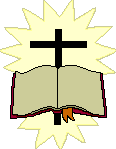![]()
CHRISTIANITY IN DINKA
 Christianity was introduced to the Bor area of Dinka in Southern
Sudan in 1905 by Shaw, a missionary of the Church of England, Shaw spent many
years in Malek which was the site of the main leper colony in the Southern Sudan.
His task was very hard. Many influences such as language, customs, beliefs
and traditional values kept people from understanding the Word of God.
Christianity was introduced to the Bor area of Dinka in Southern
Sudan in 1905 by Shaw, a missionary of the Church of England, Shaw spent many
years in Malek which was the site of the main leper colony in the Southern Sudan.
His task was very hard. Many influences such as language, customs, beliefs
and traditional values kept people from understanding the Word of God.
People were also reluctant to allow their children to stay near a leper camp, and kept them at home to help cultivate the fields and guard the cattle. In Malek the people were threatened by a crocodile at the point in the Nile River where they would go to collect water. Shaw built a cement wall at the site to protect them from crocodile and named it the Baptism Point. He began baptizing people living in Malek. Most of those baptized were students because they were able to read the contents in the Bible in their language and English Malek was also the site of the best secondary school in the Bor Area. The school was isolated from the town so that students could focus on their studies.
The languages taught were Arabic, English and Dinka. The secondary school admitted students who had finished the first six grades of primary school. These came from school in court centers including Anyidie, Baidit, Makuac up to Duk-Fadiet. Shaw's work with the students at Malek was the beginning of the spreading of Christianity in the Dinka community at large.
Christianity came to the Dinka people as a great gift from the Holy Spirit. It spread primarily through the cities and did not reached the villages until the 1980's this was because the Dinka people who lived in the cities were not able to convince those lived in the villages. After the Civil war broke out in 1983, the people who lived in the cities were forced to moved to the villages, and were able to convince the village people to accept Christianity.
there was a sixty year gap before the next Mark Nickel an Episcopalian from the USA who arrived in 1990's. Nickel was famous for communicating with the Dinka people in their own dialect. In his teaching as a joke he named people according to their character. He was called, for instance Elephant Bull because he was huge. Nickel was very popular and many Dinka babies were named for him. In the beginning, people gathered under the trees for services, sitting on mats or plastic sheets. Then pastors, deacons, council members and other introduced the idea of of building churches. Now the Dinka people pray to God Almighty in their churches as well as outdoors in the cattle camps outside the villages
Believing in God came to the Dinka people through the work of the Holy Spirit which inspired young men and women to compose hymns in the Dinka dialects and dances to praise to praise God. The power of God taught people to read very quickly. God opened the minds of His people and showed them the right way to live.
Before Christianity was introduced to the Dinka people, they celebrated the end of the year by spreading pop-grain along the paths to their homes and around the buildings. They sacrificed a white bull, because they believe that God is white like the sky and the rain. The Dinka believe that it is God who sends the rain which irrigates their crops and it is God who provides the power of light--the Sun, the Moon and the Stars which provide their journeys.
Thunder storms and lightening were also revered by the Dinka people as signs of God and they gave thanks to God for the rain for their crops and cattle for protection against wild animals.